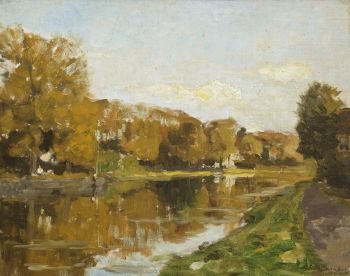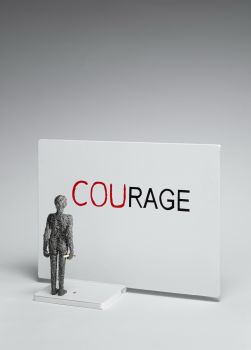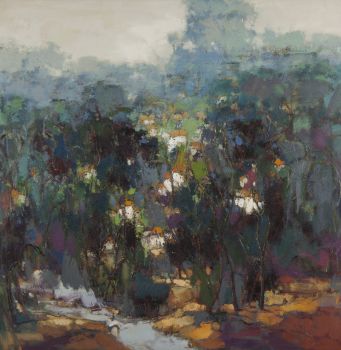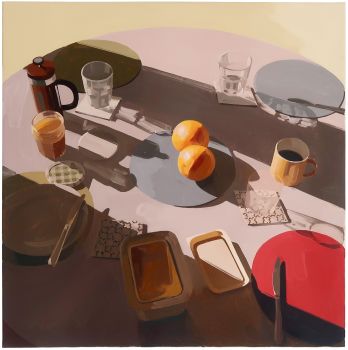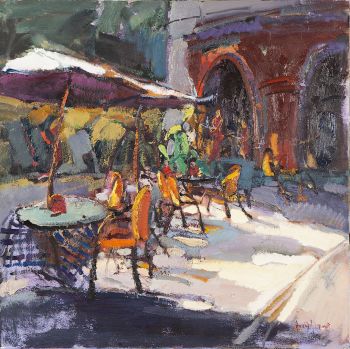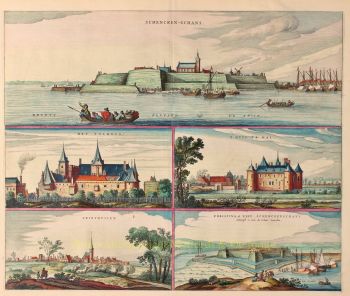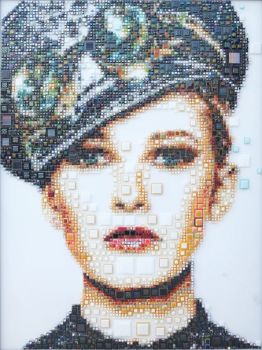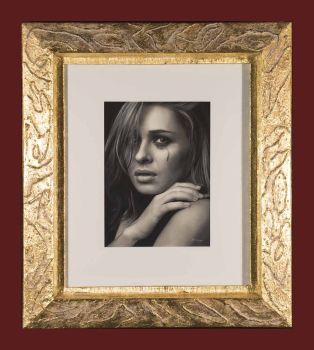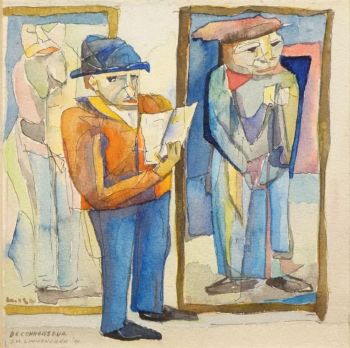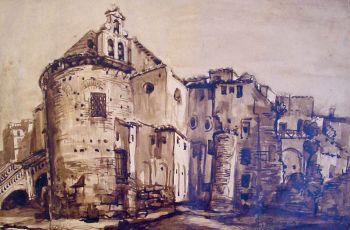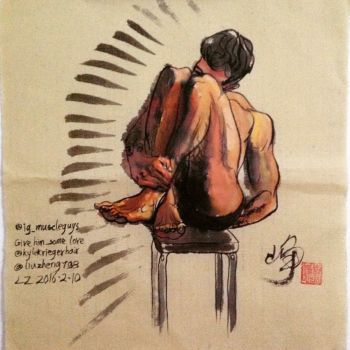Woman along a canal in Amsterdam 1894
Egbert Rubertus Derk Schaap
Watercolour
34 ⨯ 45 cm
ConditionGood
Price on request
Adelwein Kunst
- About the artworkSigned and dated right below '94
- About the artistThe painter E.R.D. Schaap grew up in the d'Oranjeboom house on the Vecht. During his time at the academy in Amsterdam he not only got to know his future wife Hendrika van der Pek, but also Breitner and the young Maks. Maks has seen Egbert Schaap as a teacher all his life. That seems a bit strange, because Schaap was not exactly a progressive painter by our standards. Until 1913 he paints and watercolors in a dark range of city and forest views.
Wide puddle views, often in large format, are also a favorite theme. He and his painting wife Hendrika have been living and working in villla Nova for about ten years now. The couple receives many guests from Amsterdam, including the well-known 'great' painters. Isaac Israels once painted a few girls in the grass. Sheep enjoyed prestige. After a quarrel in the St. Lucas painters' association between the modern 'blues' and the conservative 'browns', he was elected president of the 'brown' St. Lucas in 1913. Five years earlier he had made a name for himself with his booklet Romanticism in which he gave his vision on painting. Works of art were to be understood as the highest expression of the human spirit...' What one had to find in art was 'the materially incarnate Holy, (...) the expression of the desire of the ideal, of the belief in the superiority of fantasy over the actuality of the so-called truth… In his eyes, this reference to the higher was the essence of Romanticism, but also of all good art through the ages.
Schaap explicitly stated that he should not have anything to do with art that was born from the 'spirit of the times' or that arose from the needs of the art trade. Emphasizing the spiritual element in art – albeit quite late – fits in with the movement of Symbolism at the end of the nineteenth century, with the art of Toorop, Matthijs Maris and the 'artists of the Idea', as they were then known. named. After 1913, Schaap painted light landscapes in large numbers, with apple and pear trees in blossom. Although in our view these carefree paintings can hardly have a hidden symbolism, it was different at that time. At least titles like Spring Vision suggest that.
Are you interested in buying this artwork?
Artwork details
Related artworks
Egbert Rubertus Derk Schaap
GEZICHT OP KORTENHOEF1862 - 1939
Preis auf AnfrageGalerie Het Noorderlicht
Egbert Rubertus Derk Schaap
LANDSCHAP AAN DE VECHT1862 - 1939
Preis auf AnfrageGalerie Het Noorderlicht
1 - 4 / 4Jan Voerman sr
Still Life with flowers in a Chinese figurine1850 - 1900
Preis auf AnfrageKunsthandel Pygmalion
Isaac Israels
"Een essayeuse bij het modehuis Hirsch"1865 - 1934
Preis auf AnfrageStudio 2000 Art Gallery
1 - 4 / 24- 1 - 4 / 24
Jean-François Rauzier
Yali Veduta - Limited edition of 8 (Hyperphotography light box)2015 - 2024
Preis auf AnfrageVilla del Arte Galleries
1 - 4 / 24Unbekannter Künstler
WICHTIGE UND SELTENE GROSSE INDISCHE 'COMPANY STYLE'-MALEREI AUF Elfenbein, die eine Parade darstell1850 - 1900
Preis auf AnfrageZebregs & Röell - Fine Art - Antiques
 Kuratiert von
Kuratiert vonDanny Bree
Emile Bernard
Sketch of the surroundings of Tonnerre1888 - 1941
Preis auf AnfrageKunsthandel Pygmalion
Jan Voerman sr
Still Life with flowers in a Chinese figurine1850 - 1900
Preis auf AnfrageKunsthandel Pygmalion
1 - 4 / 24Herman Bogman jr.
Le Pont au Change et Le Conciergerie in Paris 1935 - 1945
Preis auf AnfrageAdelwein Kunst
Rudolf de Bruyn Ouboter
Still life with red bowl, blue salt cellar, weck jar and Japanese print1940 - 1960
Preis auf AnfrageAdelwein Kunst
Bob Buys
Paris, Gare de L'Est, Passerelle de la Rue d'Alsace1940 - 1950
Preis auf AnfrageAdelwein Kunst
1 - 4 / 12





